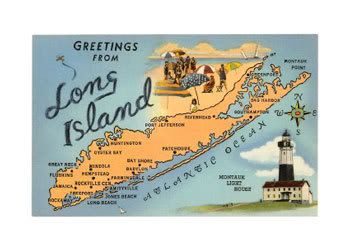New study looks at Hispanic immigration impact on Long Island
 When talk turns to immigration and immigration reform more often than not the discussion will revolve around the border states or California with its large Latino population, or even the southeast where the recent influx of new immigrants has sparked backlash and controversy. But rarely do people think of traditional immigrant gateways like New York. Yet, every year New York is in the top three states for the number of foreign born residents both legal and illegal, and as anyone with even a cursory knowledge of the state can figure out, the bulk of those immigrants live in and around the NYC area.
When talk turns to immigration and immigration reform more often than not the discussion will revolve around the border states or California with its large Latino population, or even the southeast where the recent influx of new immigrants has sparked backlash and controversy. But rarely do people think of traditional immigrant gateways like New York. Yet, every year New York is in the top three states for the number of foreign born residents both legal and illegal, and as anyone with even a cursory knowledge of the state can figure out, the bulk of those immigrants live in and around the NYC area.
Over the past 25 years, one region that has seen the greatest increase in immigrant population, and particularly in Latino immigrant population, has been Long Island. Originally a prototype for the mostly white, middle and working-class, suburban communities that sprung up in post-war America, Long Island has matured over time into a much more diverse, multi-ethnic, immigrant gateway. Today it is home to one of the fastest growing Latino populations in the nation made up of both new immigrants and native born.
A new study from the Horace Hagedorn Foundation and Adelphi University takes an in-depth look at over twenty five years of Latino immigration to Long Island and it's effects on the economic growth of the region.
In 1980, fewer than one out of every twenty Long Islanders was Hispanic. Today, the proportion is nearly one in eight. This rapid demographic change has resulted in increased ethnic tension and anti-immigrant sentiment. Suffolk County Executive Steve Levy recently made national headlines by sponsoring legislation that would make it illegal for businesses with contracts with the county to employ undocumented immigrants. Congressional Representative Peter King, one of the nation's most vocal opponents to immigration reform, co-sponsored last years House immigration bill, H.R. 4437, that sparked protests throughout the country.
While King and Levy pander to the lowest impulses of human nature, the new study, "The Economic Impact Of The Hispanic Population On Long Island, New York" from Mariano Torras, Ph.D.,of Adelphi University and economist Curtis Skinner, Ph.D. shows that rather than lowering the quality of life for Long Islanders, over 25 years of Latino immigration has brought great benefits.
The study takes a comprehensive look at how continuing immigration effects a mature “immigrant gateway”, focusing on the demographics and economic effects of Latino immigration in the area.Executive Summary
Long Island’s Hispanic population has grown dramatically in recent years, led by new immigration from Latin America. Indeed, Hispanics have emerged as the major source of demographic growth for the region—excluding new Hispanic residents, Long Island would have lost, rather than gained, people since 1980. The new Hispanic presence is visible both in cities and villages with established Hispanic populations and in smaller and more remote communities, especially in Suffolk County.
As workers, consumers, entrepreneurs and taxpayers, Hispanics make important contributions to the Long Island economy. Hispanic residents add nearly $5.7 billion to total Long Island output as a result of their consumer spending. Hispanic employment continues to grow very rapidly—increasing by almost one third from 2000 to 2004 alone—and Hispanic workers are an important presence in diverse regional industries, including Manufacturing, Accommodation and Food Services, Landscaping Services and Construction. Hispanic-owned business is also booming in the region, posting almost $2 billion in sales in 2002. In addition, Long Island Hispanic residents contribute positively to local government budgets. This study finds that Hispanics contribute $614 more per resident to local revenues than they receive in local expenditures on education, health care and corrections.
The importance of Hispanic Long Islanders to the regional economy will only deepen as this population continues to grow in the years ahead. This study documents the extraordinary recent changes in the region’s Hispanic residents and describes the key demographic characteristics of this population. It then quantifies the Hispanic population’s contributions to production, employment and new business creation on Long Island. The report concludes by analyzing the Hispanic contribution to local government revenues and costs.
Among the study’s major findings:
Demographics: The Long Island Hispanic population tripled to nearly 330,000 residents since 1980, and it now represents approximately 12 percent of the general population.
Entrepreneurship: From 1997 to 2002, the number of Hispanic-owned businesses in Long Island rose by almost 35%, and total sales and receipts by 21%.
Economic Impact: Long Island’s Hispanic population contributed an average of $614 more per resident than it received in local expenditures on education, health care and corrections.
The Economic Impact Of The Hispanic Population On Long Island, New York, Horace Hagedorn Foundation

































3 comments:
Duke,
Thanks for the link. If you haven't heard of it (or read it), I highly recommend Jennifer Gordon's terrific book (Suburban Sweatshops) about her work founding the Workplace Project on Long Island, immigrant advocacy generally and the overall treatment of immigrant (especially undocumented) labor in today's suburbs.
And thanks for your website. I'm an immigration lawyer who does quite a bit of advocacy work, and I've found it to be invaluable over the last few months (though I've never commented until now). Thanks!
Thanks Michael.
Which link was yours? ...just wondering.
duke,
sorry if i wasn't clear. i meant thanks for linking to the long island study.
michael
Post a Comment